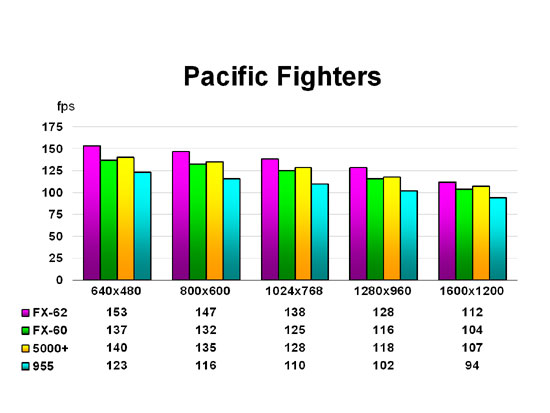by John Reynolds
Introduction
 AMD is a somewhat beleaguered company these days. Having firmly obtained the desktop performance crown in late 2003 with the launch of its highly successful Athlon 64 processors, AMD finally saw the subsequent halo effect of this dominance garnering a respectable market share upswing that cracked open highly-monolithic vendors such as Dell last year. Yet the introduction of Intel’s Core 2 Duo desktop lineup last summer has completely turned the tables on AMD’s performance leadership, placing AMD in the position of offering processors that are slower and yet run hotter than the competition’s. Worse, Intel initiated a mini-price war last year that has seen both companies cutting into their margins, a situation AMD’s competitor can better afford to see continue into the coming months. Particularly with AMD’s $5+ billion purchase of its new graphics division, the company formerly known as ATI, which itself is lagging months behind NVIDIA in bringing to market its DirectX10-based designs. The future could brighten for AMD this year, though, since the company has begun shifting fabrication of its AM2 line over to a 65nm process and expects to introduce a new CPU architecture, code named K8L, later this year; furthermore, rumors hint at a March release date for AMD’s next-generation discrete graphics products that certain industry insiders have hinted will be quite competitive against NVIDIA’s 8800 series.
AMD is a somewhat beleaguered company these days. Having firmly obtained the desktop performance crown in late 2003 with the launch of its highly successful Athlon 64 processors, AMD finally saw the subsequent halo effect of this dominance garnering a respectable market share upswing that cracked open highly-monolithic vendors such as Dell last year. Yet the introduction of Intel’s Core 2 Duo desktop lineup last summer has completely turned the tables on AMD’s performance leadership, placing AMD in the position of offering processors that are slower and yet run hotter than the competition’s. Worse, Intel initiated a mini-price war last year that has seen both companies cutting into their margins, a situation AMD’s competitor can better afford to see continue into the coming months. Particularly with AMD’s $5+ billion purchase of its new graphics division, the company formerly known as ATI, which itself is lagging months behind NVIDIA in bringing to market its DirectX10-based designs. The future could brighten for AMD this year, though, since the company has begun shifting fabrication of its AM2 line over to a 65nm process and expects to introduce a new CPU architecture, code named K8L, later this year; furthermore, rumors hint at a March release date for AMD’s next-generation discrete graphics products that certain industry insiders have hinted will be quite competitive against NVIDIA’s 8800 series.
The Athlon 64 X2 6000+ is a continuation of AMD’s 90nm-based Windsor core design. Which means the CPU has a die size of 218mm2 and sports roughly 227 million transistors. With a core frequency of an impressive 3.0GHz, 400MHz higher than the X2 5000+’s 2.6GHz clock speed and 200MHZ faster than the FX-62, this gives the 6000+ the highest speed rating of any desktop processor in AMD’s history. Each core boasts 1MB of L2 cache for a 2MB total for the entire CPU, compared to 4MB found in Intel’s Core 2 Duo processors; this larger L2 cache, an increase over the 512K per core in the 5000+, is traditionally found in AMD’s high-end FX CPUs. The X2 6000+, however, also comes with a TDP (thermal design power) rating of 125W, which contrasts fairly poorly with the 65W rating of the Core 2 Duo lineup or the 89W of the X2 5000+.
Initial details to the press concerning the X2 6000+ listed a $600+ price tag, yet just a week before launch AMD announced a price change to $459. We’ll therefore test the 6000+ against the last AM2 X2 CPU AMD sampled to SimHQ, the X2 5000+, and against Intel’s Core 2 Duo E6700, which currently sells for slightly over $500. Will the X2 6000+’s 3.0GHz clock speed enable AMD to recapture the performance flag from Intel? Let’s find out.
Test System Setups
AMD System
- AMD Athlon 64 X2 6000+ (3.0 GHz dual core)
- AMD Athlon 64 X2 5000+ (2.6 GHz dual core)
- ASUS M2N32-SLI Deluxe (nForce 590 chipset)
Intel System
- Intel Core 2 Duo E6700 (2.66GHz dual core)
- Intel D975XBX2 motherboard (975X chipset)
Both test setups shared the following system components.
- 2 GB (2 x 1GB) of Corsair DDR2/800 (4-4-4-12) memory
- ATI Radeon X1950 XTX (Catalyst 7.1)
- Western Digital Raptor 150GB hard drive
- Plextor PX-712S DVD drive
- Creative SoundBlaster X-Fi sound card
- Enermax 550 Watt ATX power supply unit
The two test systems were built using the latest motherboard BIOS and chipset and add-in component drivers. Anti-aliasing, anisotropic filtering, and vsync were forced off in the graphics control panel during all game testing; Catalyst AI was likewise disabled. Windows XP Professional (SP2) was loaded and configured with automatic updates, system restore, and all unnecessary startup services disabled. And unless otherwise noted the licensed version of Fraps 2.8.2 was used to record performance scores. Testing was conducted with the following software:
- Falcon 4: Allied Force (v1.0.9)
- IL-2: Pacific Fighters (v4.0.4)
- MS’ FSX
- rFactor (v1250)
- GRAW (v1.35)
- A Company of Heroes (v1.4)
- PCMark05 (v1.2.0)
- 3DMark06 (v1.1.0)
- Microsoft’s Windows Media Encoder














